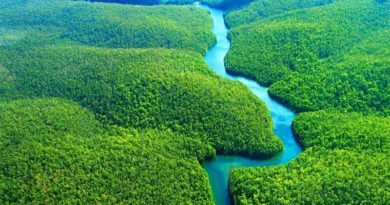IUCN releases guide on sports industry impacts on nature
A new guide designed to help the sports industry understand its potential impacts on nature and options for mitigating them, as well as identify new opportunities for sport to enhance conservation, was released on Monday April 9, 2018 by International Union for Conservation of Nature (IUCN).
New IUCN guide for sport explores how to reduce impacts on biodiversity.
“From restoring degraded land in cities to preserving protected areas, the global sports industry is uniquely placed to help protect biodiversity on a scale that ranges from the local to the global,” says IUCN Director General Inger Andersen. “Strengthening the alliance between sport and nature can provide a powerful contribution to halting biodiversity loss, ensuring a healthy environment that benefits all of society.”
The guide puts forward advice and examples to demonstrate how sport can have a positive contribution to nature conservation. This includes preserving green spaces, enhancing natural habitats in urban environments, sharing biodiversity data collected during the development of venues, and supporting carbon offset projects that will also generate biodiversity benefits.
A broad range of stakeholders could benefit from the guidance, including city authorities, who are key players in the development of new venues and bidding for sporting events; planners, architects and engineers tasked with choosing the location, design and construction of sports venues; venue owners, operators and government officials overseeing events; and national and international sports federations and local organising committees responsible for the planning and staging of events.
“We believe that everyone in the sporting community has an important duty of care – or stewardship – towards the natural environment and for protecting biodiversity. It is part of our natural world and a vital part of what makes sport so special,” says Christophe de Kepper, Director General of the International Olympic Committee. “We hope this guide will inspire the sporting world to take a closer look at how their sport activities interact with the natural environment, and what they can do to foster biodiversity conservation.”
The publication was presented today at a workshop hosted by IUCN with representatives from several international sports federations. Discussions focused on how sports federations could scale up their commitments to conservation, and work with others to implement the measures outlined in the IUCN guide.
The guide is the first in a series that IUCN will produce as part of its partnership with the International Olympic Committee (IOC). Under the collaborative agreement, IUCN has provided input on the candidature process for the Olympic Games 2024, and other tasks related to IOC’s sustainability strategy.




